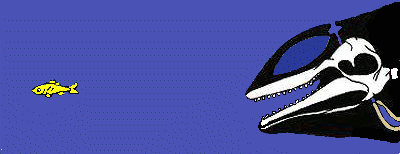Form and Function
Common Dolphins have many inherited physical traits that allow them
to survive in in their particular marine environment. For example, a
very interesting physicality of the common dolphin species includes
its sound perceiving and generating organs. The anatomies of
dolphins show that there are air passages that are connected to
their sound generating organs. What is peculiar is the fact that
these passages do not necessarily contribute to the normal
respiration processes of the creature; instead, the air that is
reused many times over for the creation of sound. (Rodionov et al.
2012) 
The sound generated in itself very distinctive.
Not only is the organ used by the Common Dolphin very unique, it
also creates a very recognizable sound that is essential for
underwater communication between the individuals of its species. The
muscles that surround the supracranial air sacs function to move air
through the valves of the resonance structure. This needs to be done
in very specific ways in order to create the desired whistle or tone
for the dolphin. For variation, the two sides of a dolphin’s nasal
cavity are actually independent of each other concerning air
circulation. This allows individuals to communicate using not only
one, but two sources of sound. (Rodionov et al. 2012)
If you want to learn what is going on to help
the common dolphins go to
Conservative Efforts
You Lost? Home
